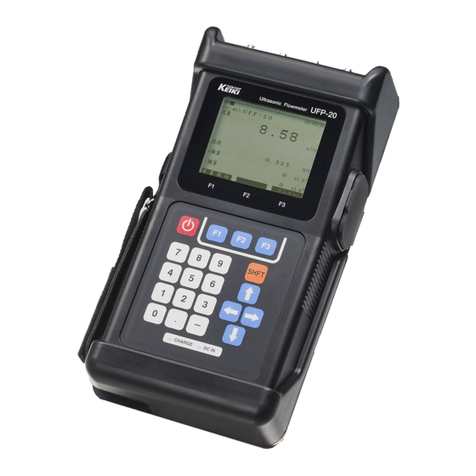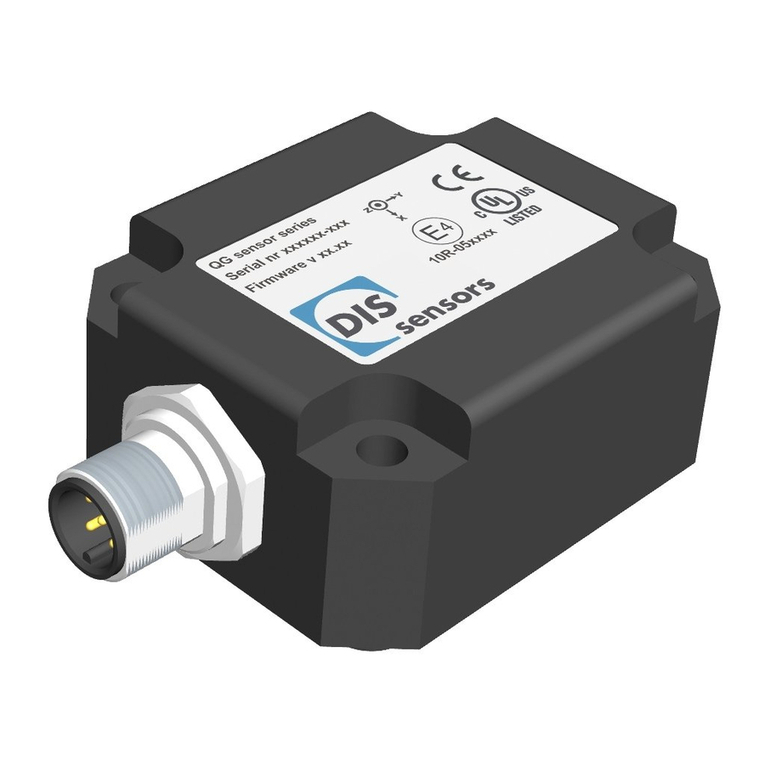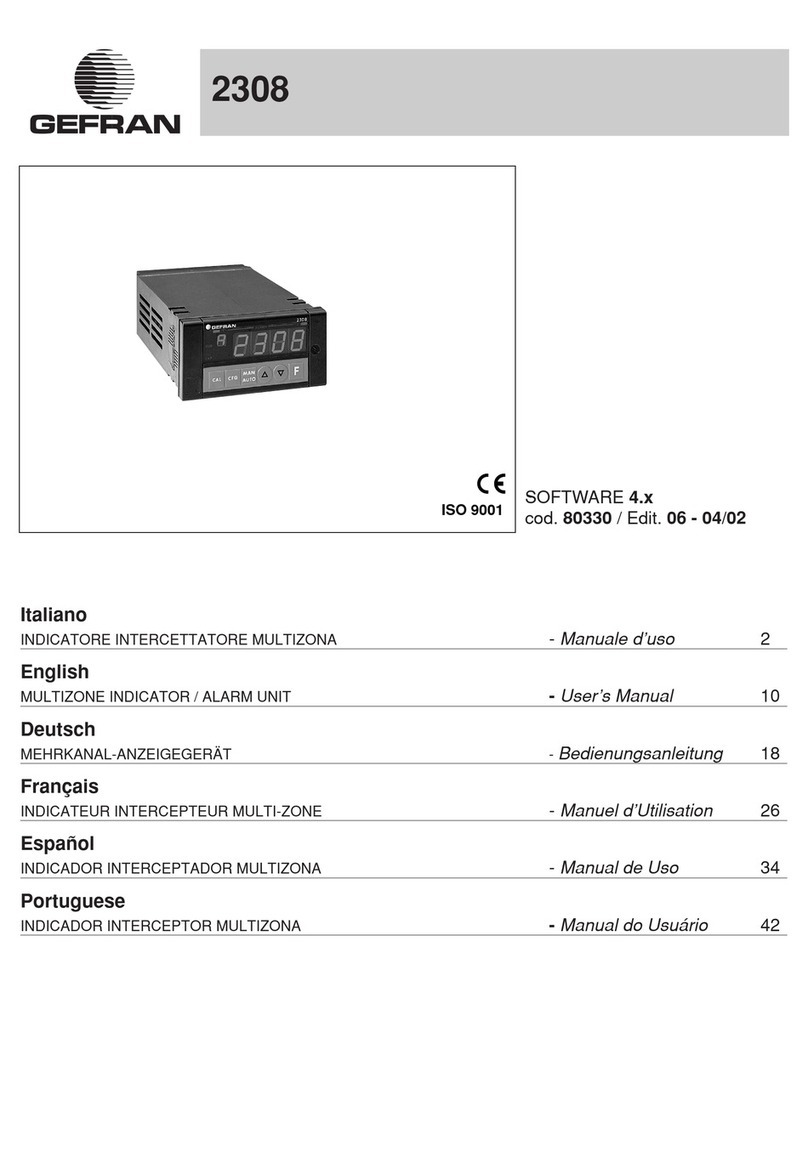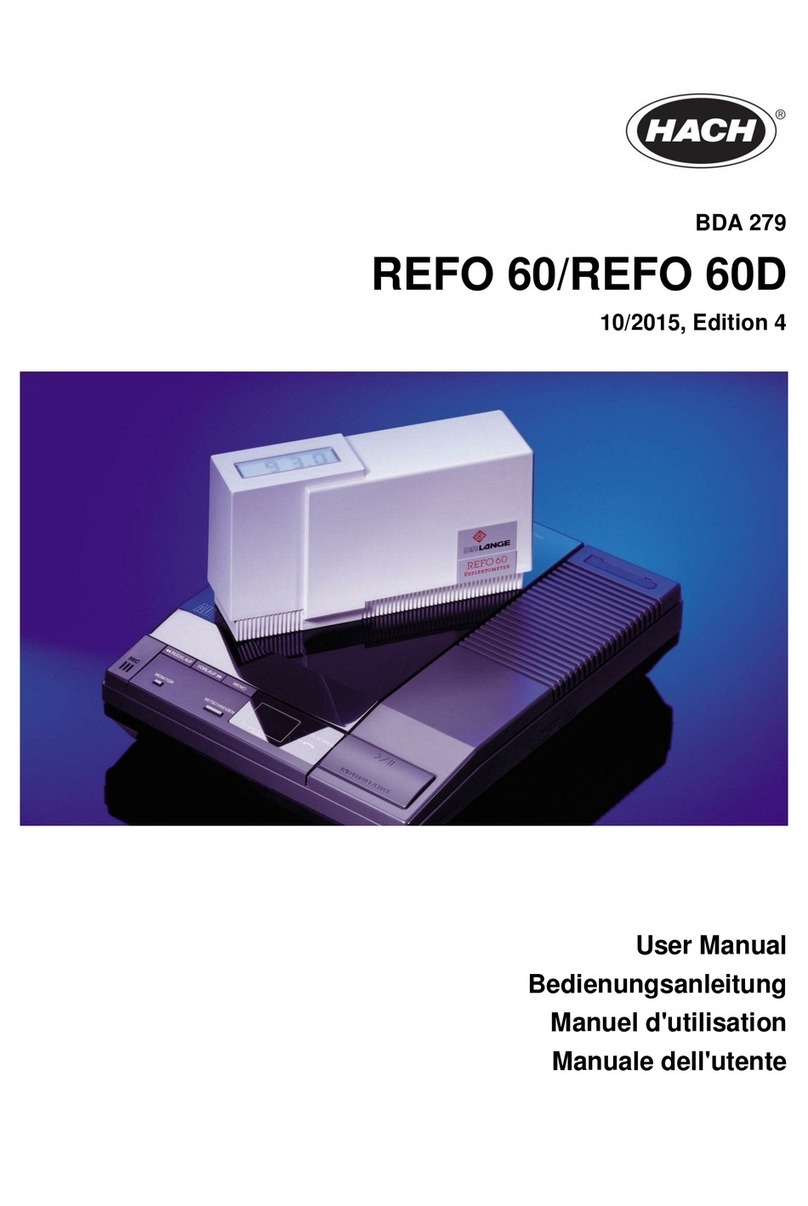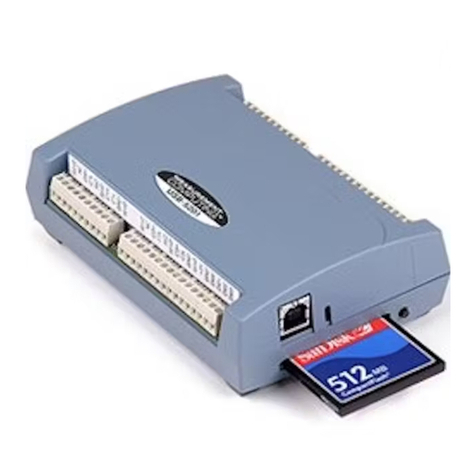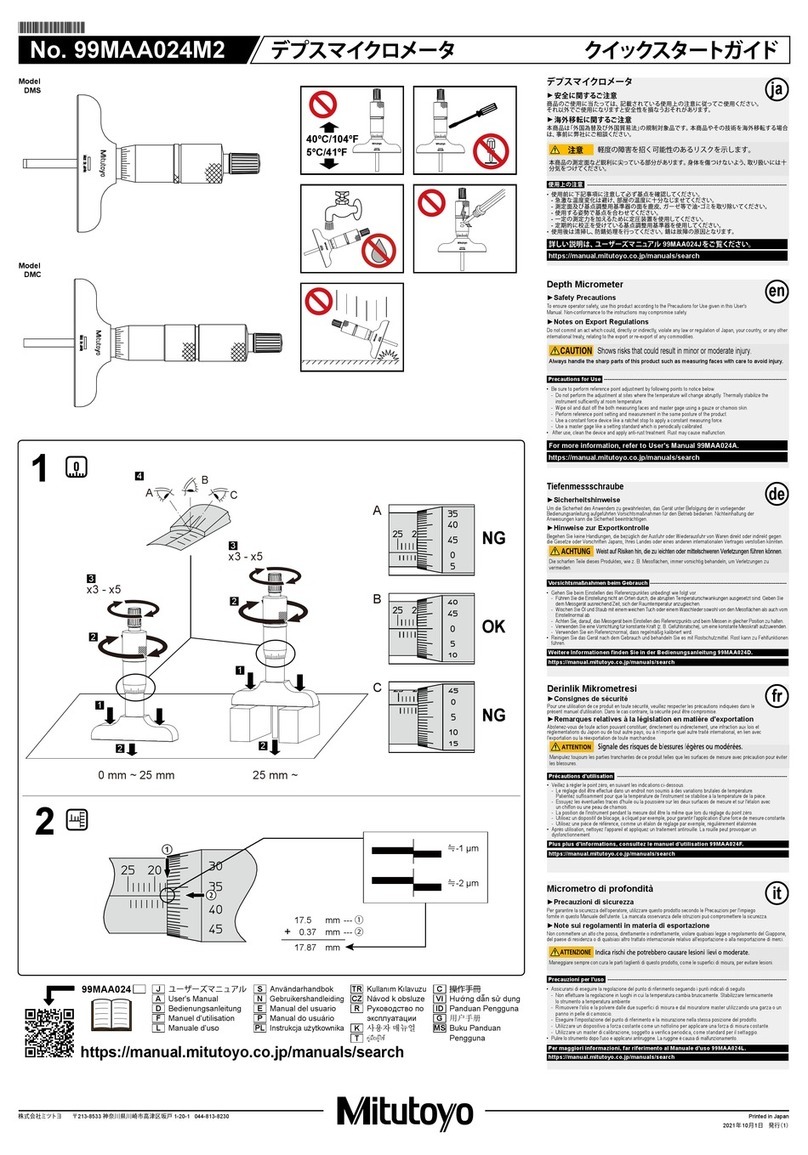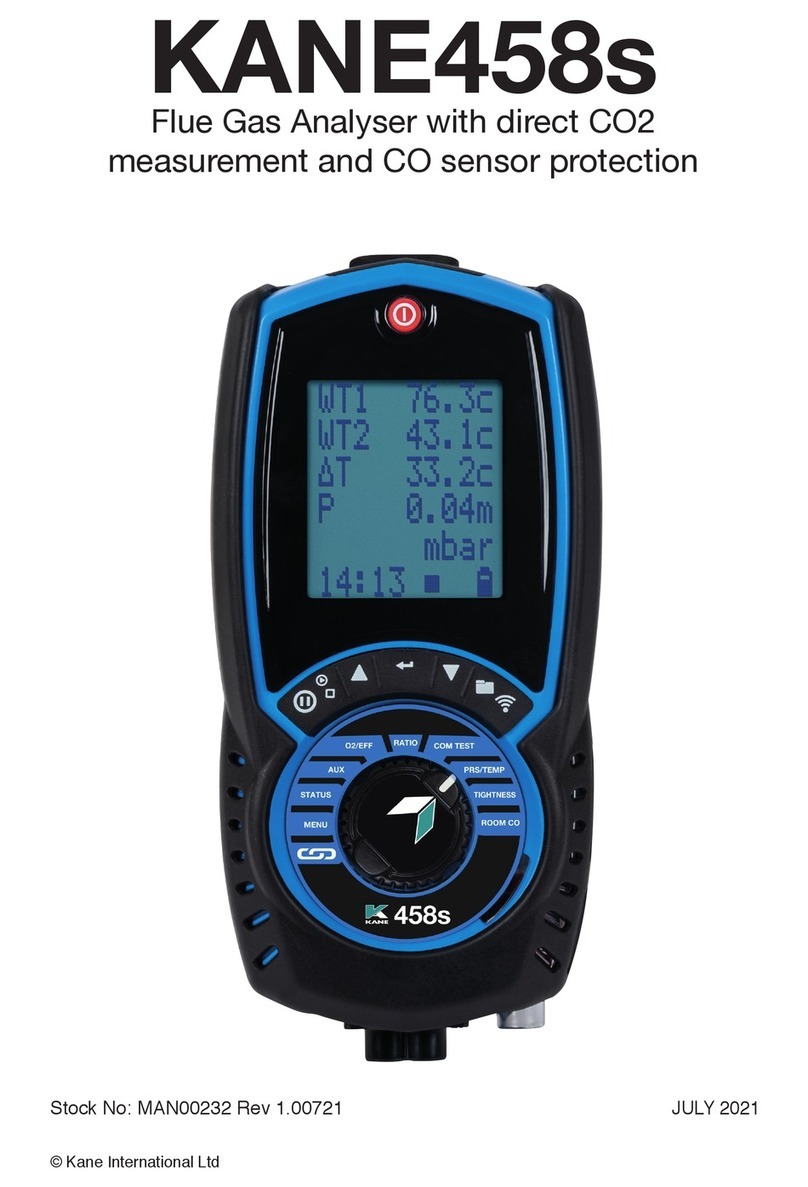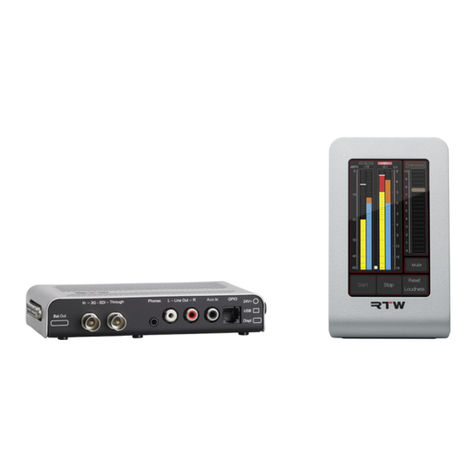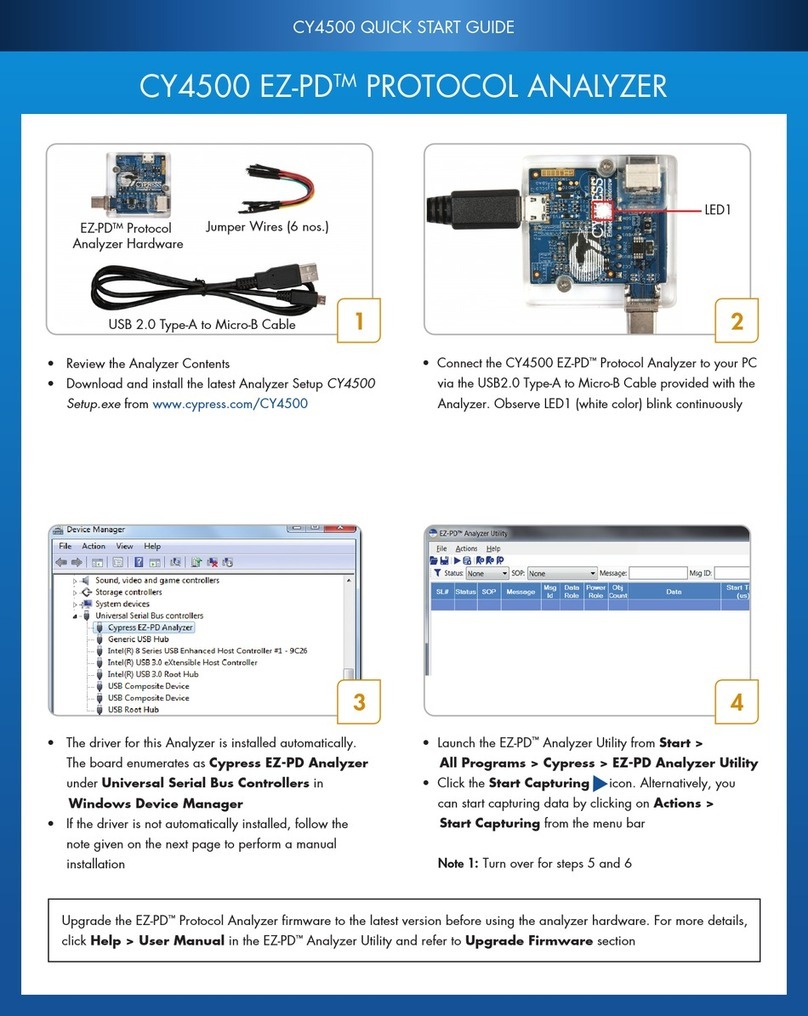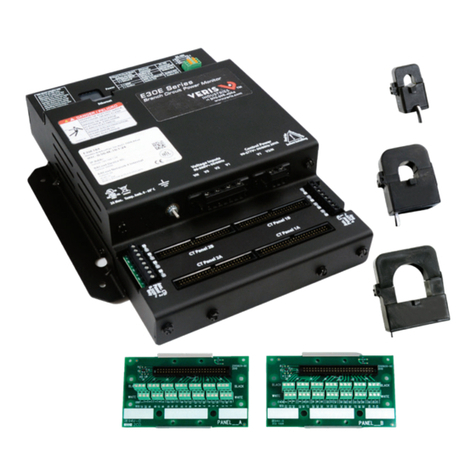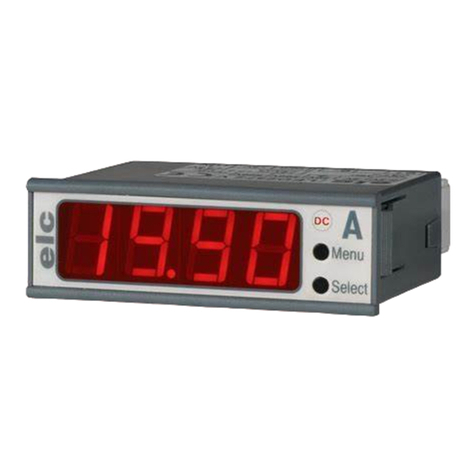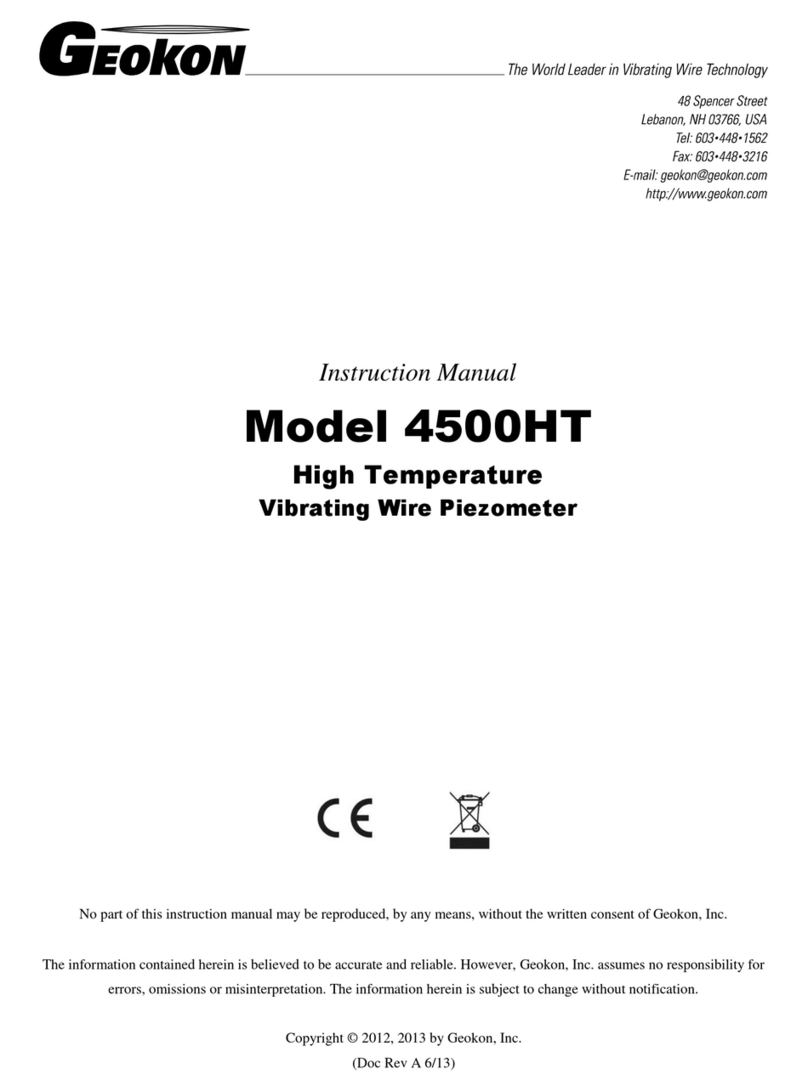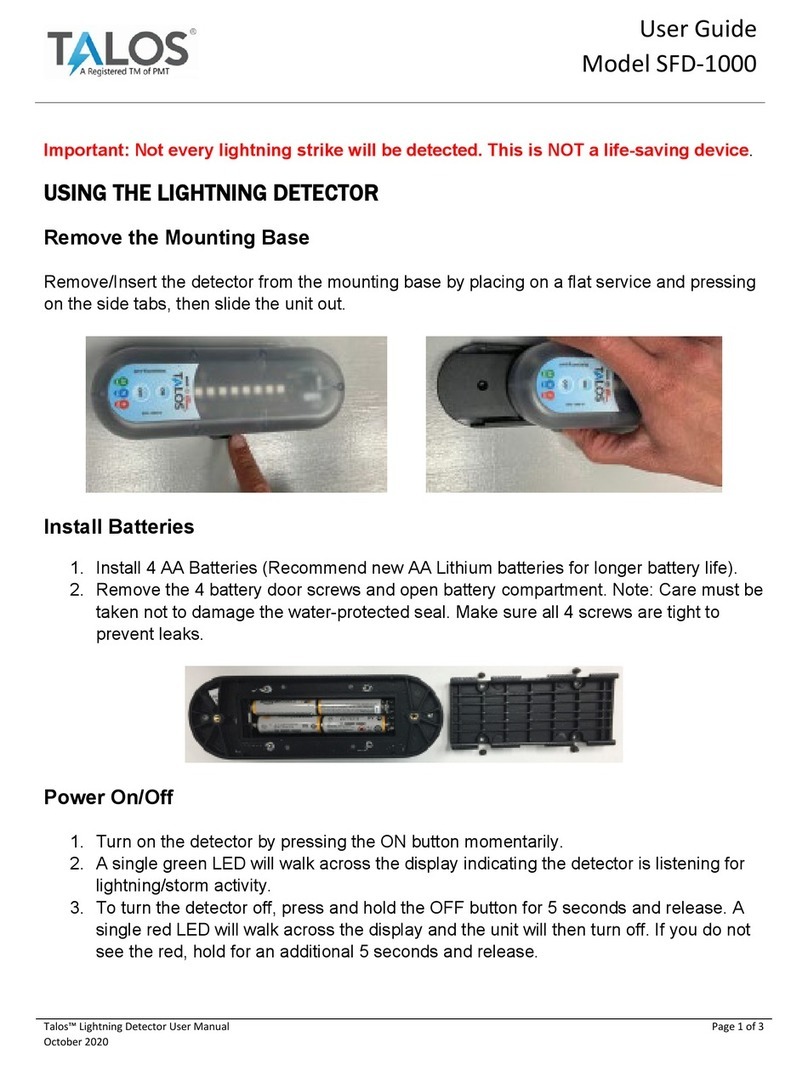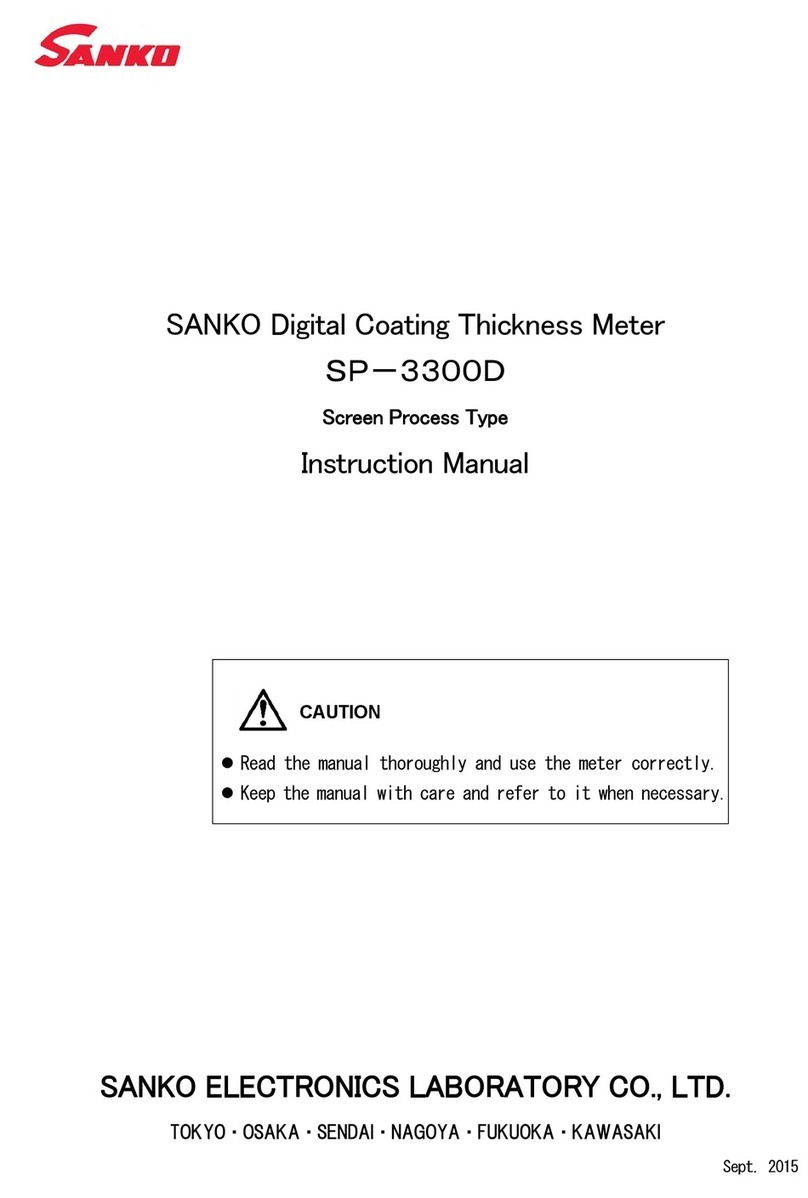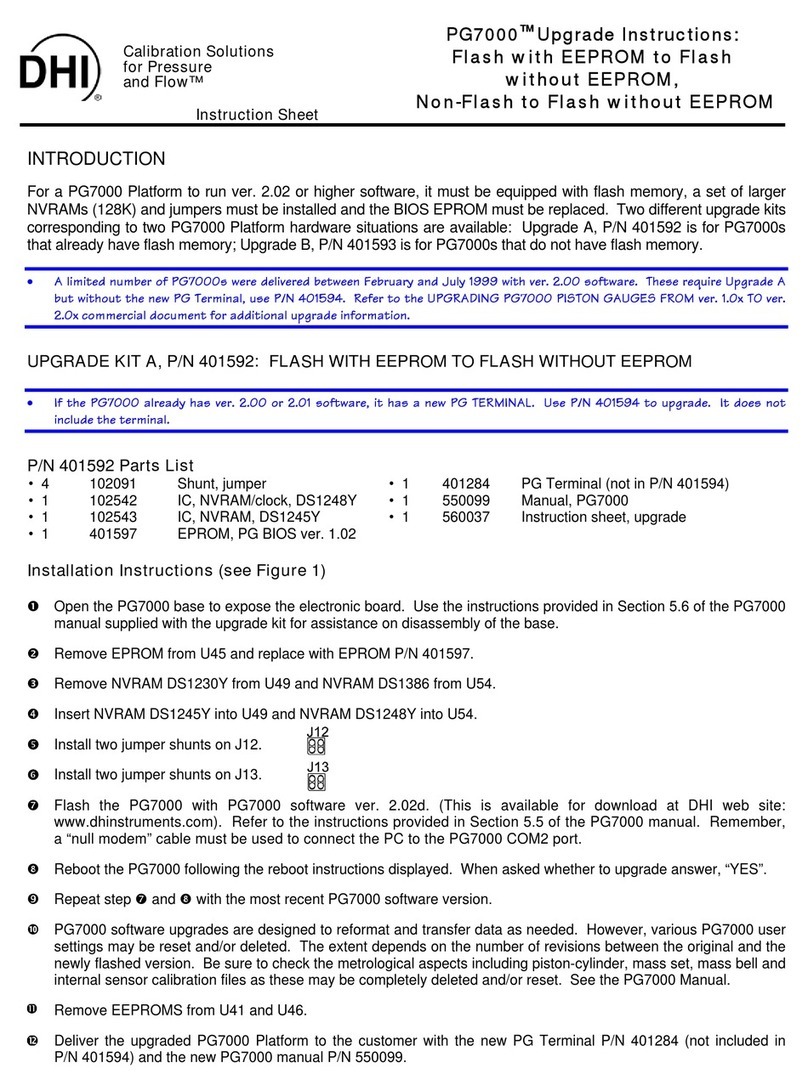Tokyo Keiki HC-10 User manual

Document No. KF23-003
Hybrid Level Gauge
HC-10
Installation & Operation Manual

(1)
Please read this manual carefully and follow directions before installing and operating the
device. TOKYO KEIKI INC. is not at all liable for an injury and/or a damage resulting from
misuse of this device by the user that is contrary to these cautionary notes.
This manual contains important information for using our level gauge safely and correctly,
as well as preventing potential risks and damages that may occur when using the device.
Read the explanations below carefully and familiarize yourself with the symbols before
reading the manual.
Safety symbols
The following are the meanings of the safety indications used in this manual and on the
device.
DANGER
Indicates that incorrect usage may result directly in death or
serious injury to the operator.
WARNING
Indicates that incorrect usage may result in death or serious
injury to the operator.
CAUTION
Indicates that incorrect usage may result in injury to the
operator or damage to the equipment.
Indicates referring to information for usage of functions or
features. (Marked on the device)
Note
Indicates attention to handling information regarding functions
or features.
Indicates the protective conductor terminal.
Indicates the ground terminal.(functional earth terminal)
Before you read this manual

(2)
Label
Important information is written on the label of a transmitter. Please check the information
before using it.
HC-10

(3)
Introduction
Thank you for selecting our Hybrid Level Gauge HC-10. This manual includes
explanations regarding HC-10. Read this manual carefully before operation to ensure an
adequate understanding of the device.
Proper use of the Operation Manual
The following points must be observed:
1. Ensure that the manual is supplied to the operator of the device. The representative or
dealer of this device must provide this manual to the user who will actually operate the
device.
2. Carefully read the manual. The contents of this manual are very important and should
be read completely.
3. Store the manual in a safe and accessible location. The manual is essential for
appropriate operation of the device. The storage location and person in charge should
be determined after careful consideration.
4. If the manual is lost, please contact the representative.A new manual is available for
purchase.
5. If any labels on this device are damaged, please contact our sales office.
6. Reprinting, transmitting or reproducing of this manual is prohibited.
Precautions regarding the Manual
1. This manual was written in accordance with the standard specifications of original
device. In case of discrepancies between written specifications and approved drawings,
the drawings should be given precedence.
2. This manual details the operation, function and performance of the device and does
not guarantee the customer's specific application.
3. The contents of this manual may be subject to change without notice.
4. We have written thoroughly about the contents of this manual, but if you find any
mistakes or omissions regarding the contents, please contact us or the representative
you purchased.
5. Any changes to the specifications, structures or parts that do not affect functionality or
performance may not be revised each time.
6. The company name and product name used in this manual are trademarks of each
company.Also, TM or R marks are not shown in the contents or figures.

(4)
Prohibitions and Precautions for Safety
For your safety, please observe the following.
WARNING
・Please observe the safety instructions in this manual. We cannot guarantee the safety
if the device is handled contrary to the instructions.
・Modification of the device is strictly prohibited. We are not responsible for any
damages or defects caused by the remodeling.
CAUTION
When carrying this device, be careful not to be injured by falling.
CAUTION
This device is not an explosion proof specification. Please refrain from using it in
dangerous places.

(5)
Restrictions and Precautions necessary to maintain the device
The following must be observed in order to maintain the device.
CAUTION
・Do not drop or bump the unit and the transducer.
・Do not use the unit in environmental conditions (ambient temperature, ambient
humidity) other than those prescribed in this manual.
・Do not use in environments where the pressure receiving part and the antenna
surface of microwave transmitter are frozen.
・Do not use the unit with a power supply other than the one prescribed in this
manual.
・Do not use damaged or worn-out cables (power cables, coaxial cables, signal
cables).
・Do not loosen or disassemble the screw of cable ground of microwave transmitter.
Waterproofing will be lost.
・Do not touch the pressure receiving part. Due to scratches and deformations, the
prescribed performance will not be obtained.
・Do not attempt to modify or disassemble the device. Contact the manufacturer in the
event of a malfunction.
・Please observe the following regarding equipment transportation.
a) Observe the temperature range of the specifications when transporting.
b) Ship it in packaging condition.
・Please observe the following regarding device storage.
a) Observe the temperature range of the specification when storing.
b) Avoid direct sunlight.
c) Avoid vibrations or shocks.
d) Avoid places where corrosive gases are present.
e) Avoid places with high humidity.
Please observe all of the following. If you do not observe, you can output incorrect
measurement values.
CAUTION
・Observe the site requirements described in this manual.
・Use within the specified power and voltage, ambient temperature and humidity in
the specifications.
・Do not cause vibration or shock to the device.
・Place the main unit, transducer and cable in a location without noise interference.
It may cause malfunction.
・If the signal level is not detected or abnormal measurement is detected, an alarm is
output. In this case, take appropriate action.
・Be sure to use the instructions in the manual when changing settings on the main
unit. Incorrect settings will result in poor performance or incorrect measurement
values (Output signals).
CAUTION
This equipment has been evaluated for conformity in business environments and may
cause radio interference when used in home environments.
Precautions for use
Before using it, please check the device, specifications (including options) and defects.

(6:Blank)

(7)
Before you read this manual ................. (1)
Safety symbols ......................... (1)
Label ............................. (2)
Introduction .......................... (3)
Proper use of the Operation Manual ............... (3)
Precautions regarding the Manual ................ (3)
Prohibitions and Precautions for Safety ............ (4)
Restrictions and Precautions necessary to maintain the device .. (5)
Precautions for use ...................... (5)
Index
Chapter 1. Configuration ................... 1-1
1.1 Device Overview ...................... 1-1
1.2 Device Configuration ................... 1-1
1.3 System Configuration ................... 1-2
Chapter 2. Installation ................... 2-1
2.1 Caution .......................... 2-1
2.1.1 Measurement Range of Radar Level Gauge .......... 2-1
2.1.2 Installation Environment ............... 2-1
2.2 Installation Location ................... 2-1
2.2.1 Installation of Radar Level Gauge ........... 2-1
2.2.2 Installation of Pressure Level Gauge ......... 2-2
2.3 Beam Area ......................... 2-4
2.4 Effect on the Measurement Range .............. 2-5
2.5 Recommended Installation Example .............. 2-6
2.5.1 Installation for Waterway ............... 2-6
2.5.2 Installation for Storage Tank ............. 2-7
2.5.3 Installation in Manhole ................ 2-8
Chapter 3. Electrical Installation ............. 3-1
3.1 Wiring Connection ..................... 3-1
3.2 Cables .......................... 3-2
3.3 Load ........................... 3-3
3.4 Power Supply ....................... 3-4
3.5 Grounding ......................... 3-4
Chapter 4. Specifications .................. 4-1
4.1 Main Unit Specifications ................. 4-1
4.2 Options .......................... 4-2
4.3 Model Code ........................ 4-2
4.4 Dimension ......................... 4-3
Chapter 5. Measurement Principle of Hybrid Level Gauge HC-10 5-1
5.1 Measurement Principle ................... 5-1

(8)
5.1.1 Measurement by Radar Level Gauge ............ 5-1
5.1.2 Measurement by Pressure Level Gauge .......... 5-2
5.1.3 Suppression of Atmospheric Pressure Fluctuation Error .. 5-3
5.1.4 Switching of Sensors .................. 5-3

1-1
Chapter 1. Configuration
1.1 Device Overview
This device is a combination of a level gauge that uses the propagation time of
microwaves to measure the distance from the antenna to the liquid surface (Radar Level
Gauge) and a level gauge that uses the measurement of liquid pressure to measure the
distance from the liquid surface to the pressure receiving part (Pressure LevelGauge). The
level measurement method switches automatically depending on the liquid level, with radar
level measurement performed when the Radar Level Gauge and the liquid surface are far
apart, and level measurement by Pressure Level Gauge when the Radar Level Gauge is
submerged. In general,by installing a Pressure Level Gauge in a waythat it does notcome
into contact with the liquid, it is possible to minimize the negative effects on measurement
such as adhesion or clogging of the pressure sensor.
Pressure Level Gauge measures liquid level from absolute pressure. This means that it
is not affected by errors in measurement caused by clogging or leakage in the atmospheric
pressure compensation tube. Furthermore, our device is equipped with a function that
automatically compares and calibrates the measurement values obtained by Pressure
Level Gauge with those obtained by a Radar Level Gauge, which helps to suppress errors
caused by atmospheric pressure fluctuations.
1.2 Device Configuration
The configuration of device is shown in Fig. 1-1. The device is divided into a transmitter
that operates as a Radar Level Gauge and a pressure sensor that operates as a Pressure
Level Gauge, and they are connected to each other via a sensor cable. A power cable
extends from the transmitter to supply power to the device and outputmeasurement values
through it.
Fig. 1-1 Device Configuration
Radar Level Gauge
(Transmitter)
Power Cable
Pressure Level Gauge
(Pressure Sensor)
Sensor Cable

1-2
1.3 System Configuration
By connecting a computer with a HART modem, the device can be adjusted using
configuration software (optional). Power can be supplied from a power supply unit, PLC,
DCS, etc. An example of a system configuration is shown in Fig. 1-2.
For details on how to adjust the device, refer to the configuration software manual.
-
電源
ユニット
+
RPL-10
DC4~20mA
HARTモデム
250Ω
出力信号
Fig. 1-2 System Configuration
HC-10
HART Modem
Output Signal
Power
Supply
unit

2-1
Chapter 2. Installation
2.1 Caution
2.1.1 Measurement Range of Radar Level Gauge
This device is a combination of Radar Level Gauge and Pressure Level Gauge. As
shown in Fig. 2-1, the measurement range is 10 meters down from the reference point,
and 8 meters up from the reference point. Make sure that the liquid surface is within the
measurement range of Radar Level Gauge.
2.1.2 Installation Environment
This device is intended for use in sewerage. Please do not use it outdoors as it may
cause deterioration due to ultraviolet rays.
2.2 Installation Location
2.2.1 Installation of Radar Level Gauge
When installing a Radar Level Gauge, please observe the following.
・Please install the device in a place where there are no reflectors that causedisturbance,
microwave interference, or pipes that cause obstruction in the beam area. For beam
areas, refer to the range shown in chapter 2.3
・Place the mounting fixture horizontally to ensure proper microwave irradiation to the
liquid level.(Within ±1°)
・To prevent deposit from sticking, install the device so that it does not come into contact
with liquid at normal water level.
Fig. 2-1 Installation location of Radar Level Gauge
水平
Caution
If the installation method or location is not appropriate, it may be measured
incorrectly. Please read this manual carefully before installing it.
Horizontal

2-2
2.2.2 Installation of Pressure Level Gauge
When installing a Pressure Level Gauge, observe the following.
・In order to prevent deposit from sticking and clogging to the pressure receiving part,
pleaseinstall thePressureLevelGaugesothatitdoes not come intocontactwithliquid.
・Install the Pressure Level Gauge at 0.5-1.0m below the radiation face of the Radar
Level Gauge as shown in Fig. 2-3.
・Install the Pressure Level Gauge with the pressure receiving part facing downward as
shown in Fig. 2-4.
・Please install the Pressure Level Gauge using a mounting fixture (Option) to prevent it
from flowing into the water flow. An example of installation is shown in Fig. 2-5.
・Install the Pressure Level Gauge so that it does not fall within the beam area of Radar
Level Gauge.

2-3
Fig. 2-2 Measurement range Fig. 2-3 Installation location of
Radar Level Gauge
Fig. 2-4 Installation direction of Pressure Level Gauge Fig. 2-5 Example of installing
a Pressure Level Gauge
(Option: Mounting Fixture)
0.5m~1.0m
Radiation face
Radar level gauge
Mounting fixture
Pressure receiving part
Pressure Level Gauge
Pressure Level Gauge
Measurement by
Pressure Level Gauge
10m
8m
Reference point 0m
0.3m
0.3m
0.5 ~1.0m
Measurement by
Radar Level Gauge

2-4
2.3 Beam Area
Beam area of this device has different beam angles depending on the direction shown
in Fig. 2-6. When installing, use the range shown in List 2-1 and Fig. 2-7 as a guide for
beam area.
Fig. 2-6 Beam angle
List 2-1 Beam angle & Beam area
Distance (m)
Beam area (m)
Lengthwise direction
(Cable direction)
Beam angle*=50°
Crosswise direction
Beam angle*=23°
2
1.9
0.8
4
3.7
1.6
6
5.5
2.4
8
7.5
3.3
10
9.3
4.1
*-3dB Half-power beam angle
Fig. 2-7 Beam area
Beam angle 50°(Lengthwise direction)
Sensor Cable
Power Cable
HC-10
Beam area
Beam angle 23°(Crosswise direction)
2m
4m
6m
8m
10m
距離
マイクロ波照射エリア
縦方向 横方向
50.0°23.0°
Beam area
Lengthwise direction
Crosswise direction
Distance

2-5
2.4 Effect on the Measurement Range
In addition to reflectors in the beam area, interference, obstacles, there are other factors
that affect the measurement range. These are listed below.
・Compared to calm fluid surfaces, measurement range of turbulent surfaces is reduced
due to poorer reflection.
・Deposit buildup on the antenna, foaming on liquid surfaces, powder granules in air
suspension and other interior tank conditions may affect measurement range and
performance.
・Measurable range may be varied when area of target fluid surface is smaller than
radiated beam area.

2-6
2.5 Recommended Installation Example
Following installation examples are recommended.
2.5.1 Installation for Waterway
When using HC-10 in a waterway, install the device with lengthwise direction of
transmitter head to be same direction of flow direction as below. Also, please install the
cable outlet on the downstream side. Also please keep the required free space from the
wall.
高さ
高さx0.5以上
※この面に配管・
突起物等のないこと
水路
流れ方向
電波式レベル計
縦方向
通常水位
流れ方向
Fig. 2-8 Example of wall side mounting installation
Fig. 2-9 Example of top roof mounting installation below grating cover
Waterway
Flow direction
of Radar level gauge
Lengthwise direction
Flow direction
Height x0.5
Level
※No pipes, projections
on this surface
Height

2-7
高さ
※この面に配管・突起物等のないこと
高さx0.2以上
水路
流れ方向
電波式レベル計
縦方向
通常水位
Fig. 2-10 Example of wall side mounting installation for Inlet water level measurement
2.5.2 Installation for Storage Tank
When installing HC-10 on the ceiling of a tank, please avoid installing the device at
the center of tank, because the reflection of side beam will affect stable
measurement.
Besides, please set the lengthwise direction of HC-10 install to be parallel against
the nearest tank wall. In such case, required free space to the nearest tank wall will
be more than [measuring range x 0.2].
タンク壁面
電波式レベル計
縦方向
測定スパン x 0.2 以上
Fig. 2-11 Example of Tank Installation
※Any obstructions, which set as parallel to fluid surface in, the radiated beam area
may contain big disturbance noise. In such case, reflection plate will be one of the
solutions to reduce its reflection.
Level
Waterway
Flow direction
Height x0.2
Height
Lengthwise direction
of Radar level gauge
※No pipes, projections on this surface
Wall
Lengthwise direction
of Radar level gauge
Measurement span x0.2

2-8
2.5.3 Installation in Manhole
When installing inside a manhole, please pay attention to the flow direction of the
waterway and the distance from the wall according to 2.5.1 Installation for Waterway.
Fig. 2-12 Installation in Manhole

3-1
Chapter 3. Electrical Installation
3.1 Wiring Connection
(1) Transmitter Side
Any cable work must be done at the end side of cable, not at the cable entry of the
main unit.
If cable extension is required, please use chemical binder at the end of cable to keep
water protection class.
Fig. 3-1 Wiring Connection
・The grounding method varies depending on the installation conditions of the
equipment. Please refer to Section 3.5 for details.
Caution
・Do not remove cable glands or any screws that attached with main unit. In case of
removal it, main unit can not satisfy performance of protection class.
HC-10 Cable
+ (blue)
- (white)
FG (yellow)
Shield
Connect to + side power line
Connect to - side power line
Frame Ground
Connect to the ground terminal of the cabinet with cable shield line.
In case of grounding already at transmitter head side, do not
Connect this line to the ground line at the cabinet.
Connect to power line shield at cabinet side.
Other Tokyo Keiki Measuring Instrument manuals


